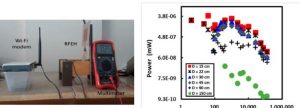Understanding the Functionality of a Waveguide Cross Guide Coupler
Introduction

A waveguide cross guide coupler is a fundamental component in microwave engineering, facilitating the transfer of electromagnetic signals between waveguides of different sizes or orientations. Let's delve into how this device operates and its significance in RF and microwave systems.
Working Principle
At its core, a waveguide cross guide coupler functions based on the principle of electromagnetic wave propagation within waveguides. When microwave signals enter the coupler through one waveguide, they encounter a junction where the energy is coupled to another waveguide. This coupling allows the signals to propagate through the secondary waveguide, enabling signal distribution, power monitoring, or isolation.
Key Components
- Input and Output Waveguides: The primary and secondary waveguides serve as the entry and exit points for microwave signals, respectively.
- Coupling Mechanism: The coupling mechanism, such as irises, loops, or probes, facilitates the transfer of energy between the input and output waveguides.
- Isolation Walls: These walls prevent unwanted coupling between the input and output ports, ensuring signal integrity and isolation.
Applications
1. Radar Systems:
- In radar systems, waveguide cross guide couplers play a crucial role in antenna arrays for beamforming, sidelobe suppression, and signal distribution.
- These couplers enable efficient transmission and reception of radar signals, ensuring accurate target detection and tracking.
2. Telecommunications:
- Telecommunication networks utilize waveguide cross guide couplers for signal routing, power splitting, and monitoring in RF amplifiers, transceivers, and antennas.
- Couplers with precise coupling ratios enable the optimization of signal strength and fidelity in communication systems.
3. Test and Measurement:
- In test and measurement applications, waveguide cross guide couplers are employed for calibration, signal monitoring, and power measurement in RF test setups.
- These couplers facilitate accurate characterization of RF components and systems, ensuring compliance with performance specifications.
Conclusion
In summary, a waveguide cross guide coupler is a vital component in RF and microwave systems, enabling efficient signal distribution, power monitoring, and isolation. With diverse applications across industries such as radar, telecommunications, and test and measurement, these couplers play a pivotal role in ensuring the reliability and performance of microwave systems.
To explore a range of high-quality waveguide cross guide couplers, visit waveguide cross guide coupler for detailed specifications and product offerings.